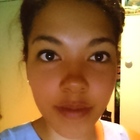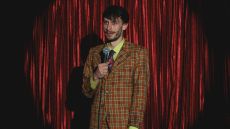The Banting Diet


What is the Banting diet?
The weight-loss plan, which is hugely popular in South Africa but relatively unknown in the UK, is named after William Banting. Following a doctor's appointment in 1862, the British undertaker began to follow this eating regime and lost so much weight that he wrote an open letter to the public titled 'The Letter On Corpulence'.
The Banting diet has some similarities to the Paleo diet, claiming that we should be eating what prehistoric humans ate before we relied on agricultural foods.
In his book The Real Meal Revolution, Professor Tim Noakes writes that there is a common misconception that eating fat makes you fat. In fact, it's a diet high in refined carbohydrates and sugar that causes obesity, diabetes and heart disease. The Banting Diet is a low-carbohydrate-high-fat (LCHF) diet that promises rapid and sustainable weight loss. What does eating a LCHF diet do to the body?
Your body can enter into a state of ketosis, which means that it burns fat for energy instead of glucose, producing ketones. You can check your ketone level using at-home test kits. To achieve ketosis, you would need to eat no more than 50 grams of carbohydrates a day. However, entering a state of ketosis isn't essential to lose weight.
What can I eat?
Your plate should contain half meat and half vegetables. In his book, Professor Tim Noakes' book provides a list of Green, Orange and Red foods indicating what you should and should not be eating. Green foods contain less than 5% carbohydrates and can be eaten without any worry, Orange contain 25% carbs and are to be eaten in moderation, and Red foods, which are high in carbohydrates and are banned.
Sign up for the woman&home newsletter
Sign up to our free daily email for the latest royal and entertainment news, interesting opinion, expert advice on styling and beauty trends, and no-nonsense guides to the health and wellness questions you want answered.
Examples of Green foods:
- Eggs
- Meat, poultry, game
- Seafood
- Nuts and seeds (almonds, flaxseeds, macadamia nuts, pecans, pumpkin seeds)
- Full-fat dairy
- Butter
- Cheese
- Coconut oil
- Olive oil
- All leafy green vegetables
- Non-starchy vegetables (aubergines, broccoli, celery, courgettes, onions, peppers)
Examples of Orange foods:
- Fruits (apples, bananas, berries, grapes, kiwis, mangos, pears)
- Cashew nuts
- Honey
- Carrots
- Butternut squash
- Sweet potato
Examples of Red foods:
- All grains and grain flours
- Bread
- Bran
- Breakfast cereals, muesli, granola
- Cakes and biscuits
- Couscous
- Crackers
- Pasta, noodles
- Rice
- Fruit and vegetable juices
- Beer, cider
- Sugar and sugar-free fizzy drinks
- Fat-free foods
- All processed food
- All fast food
- Starchy vegetables (beetroot, legumes, parsnips, peas, potatoes)
- Artificial sweeteners
- Dried fruit
- Sugar
- Vegetable oils
Read the full list here
Be careful with dairy - although it is a good source of animal fats, dairy (especially low-fat dairy) contains carbohydrates.
How much fat should I eat?
You can gauge how much fat you need based on your level of hunger after eating a meal. If you're peckish only an hour after eating breakfast, increase the amount of fat you eat.
Isn't this just the Atkins diet?
No, the Atkins is a high-protein diet. The Banting Diet advocates keeping protein intake moderate but increasing fat intake.
Can I drink alcohol?
On a weight-loss plan, alcohol isn't ideal as it provides empty calories. However, if you do indulge, opt for carb-free spirits (vodka, rum, gin, bourbon), dry wine or bubbly. Any downsides?
As with any diet, the key is not to overeat. Also, some dieters may find the list of banned foods fairly extensive and difficult to stick to in the long run.
Isa Jaward is a journalist from London who has written for the likes of Time Out, The Guardian and Music Week.
-
 I put the EcoAir DC12 MK3 dehumidifier to the test – and found it's perfect for bedrooms
I put the EcoAir DC12 MK3 dehumidifier to the test – and found it's perfect for bedroomsThis quiet dehumidifier punches above its weight when it comes to performance and usability, and won't break the bank.
By Amy Cutmore Published
-
 Is Richard Gadd married and what is the Baby Reindeer creator doing now?
Is Richard Gadd married and what is the Baby Reindeer creator doing now?Baby Reindeer creator Richard Gadd has spoken about how his stalking ordeal has affected him
By Emma Shacklock Published